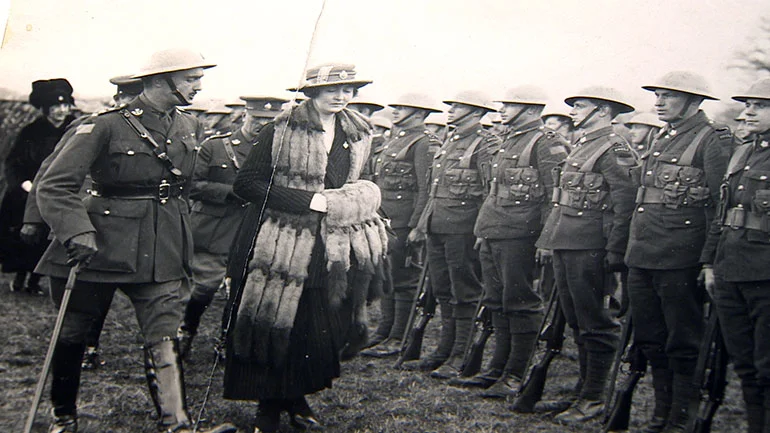For Canadians, the First World War is often looked upon as a binding force for the nation. 4 years of hellacious combat and horrendous conditions shared by British Columbians, Québécois, and Maritimers alike fostered a sense of national pride.
A veteran of the fighting at Vimy Ridge said “We went up the ridge as Albertans and Nova Scotians. We came down as Canadians.”
Though closely linked by geography, trade, and a shared heritage, Newfoundland still existed as a separate dominion of the British Empire, opting to remain a British colony as Canada confederated in 1867.
Like Canada and other British dominions, Newfoundland found itself at war with Germany on August 4th, 1914. Newfoundland’s governing body put out a call for 500 men to form a Newfoundland Regiment, fighting side by side with other dominions under the Union Jack.
Nearly double the men showed up. 970 Newfoundlanders volunteered to join the first contingent of the Newfoundland Regiment. Soon, the Regiment found themselves at Battalion strength - 1080 officers and men, with 540 reserve units.
Like Canadian units, the men were bold, brash, and enthusiastic about taking the fight to the Germans; however, they also lacked any formal training. Following strict schooling in British doctrine and discipline, the Regiment was sent to Gallipoli. They arrived September 20th, 1915.
The unsuccessful campaign to capture Gallipoli and the Dardanelles Strait was due in no part to the actions of the Newfoundlanders. As the evacuation of Gallipoli began, the Regiment acted as a rearguard force, defending those making their way to British ships.
During the 4 months at Gallipoli, the Newfoundlanders suffered around 170 casualties, and spent the next 3 months recuperating in France. Reinforcements from Newfoundland brought them back to Battalion strength, and the Regiment was sent into the line at the Somme in mid-April.
The battlefield at Beaumont-Hamel and the Newfoundland Regiment are tragically and irrevocably linked.
On July 1st, 1916, the Newfoundland Regiment lost 90% of their ranks through 20 minutes of battle. Out of 780 men who went “over the top”, only 68 were available for roll call the following day.
In spite of tremendous losses, the Regiment continued to serve. At Monchy-Le-Preux, they stemmed a German assault, while incurring further losses of 485 men.
Their sacrifices commanded respect, both from their countrymen and their Empire. Lobbying from Newfoundland Governor Walter Davidson reached King George V. In recognition of their service, bravery, and sacrifice, King George bestowed the “Royal” prefix to the Regiment in December 1917; making the Newfoundlanders the only Regiment to earn the prefix in the midst of a war.
Through the course of the war, 6,277 Newfoundlanders served with the Regiment. Although Newfoundland remained a British dominion through and after the war (not joining the Canadian confederation until 1949), their sacrifices are recognized and remembered by Canadians each year.
As No Stone Left Alone commemorates those who fought and died for our nation, we remember the brave soldiers of the Royal Newfoundland Regiment as well.










